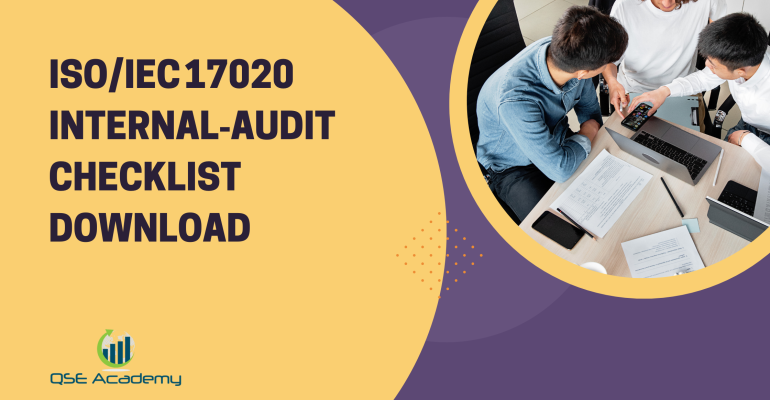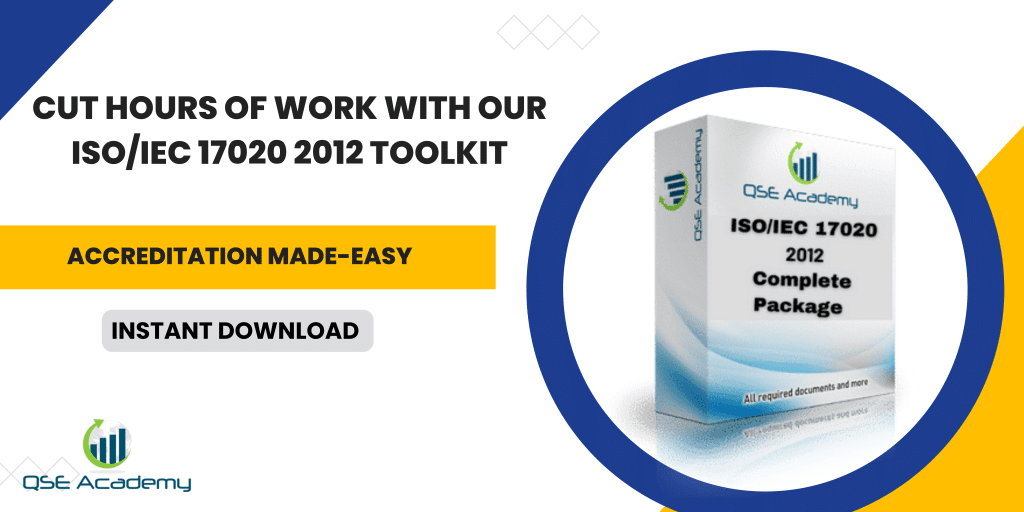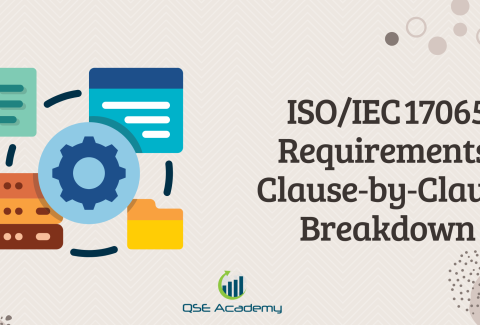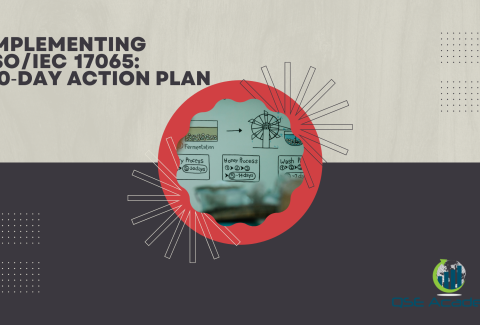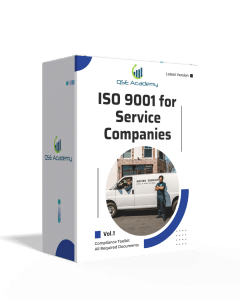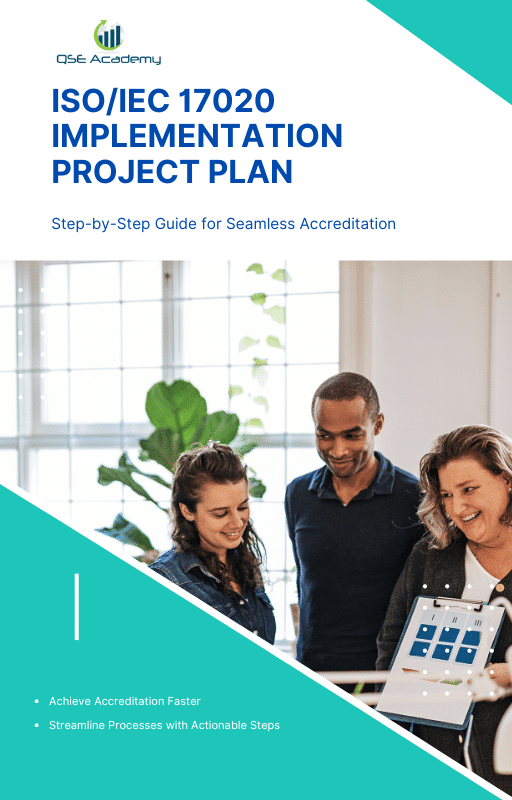ISO/IEC 17020 Internal‑Audit Checklist Download
Last Updated on October 22, 2025 by Hafsa J.
Why You Need an ISO/IEC 17020 Internal-Audit Checklist
Let’s be honest—most inspection bodies dread internal audits. They’re time-consuming, easy to postpone, and often feel like just another formality before accreditation. But here’s the truth: internal audits are the backbone of ISO/IEC 17020 compliance. They’re not just about ticking boxes—they reveal the weak spots that could cost you your accreditation if left unchecked.
In my experience helping inspection bodies prepare for ISO/IEC 17020 assessments, one pattern stands out: the teams that use a structured internal-audit checklist always perform better. Why? Because they audit with purpose. They know exactly which clauses to cover, what evidence to collect, and how to document findings clearly.
This article gives you more than theory—it gives you a practical tool. By the end, you’ll know how to:
-
Plan and conduct ISO/IEC 17020 internal audits confidently.
-
Identify compliance gaps before external auditors do.
-
Use our downloadable checklist to simplify your entire audit process.
If you’re serious about maintaining impartiality, competence, and consistent inspection quality, a proper internal-audit checklist isn’t optional—it’s essential. Now that we’ve set the stage, let’s look at what an ISO/IEC 17020 internal audit actually involves and why it matters.
Understanding ISO/IEC 17020 Internal Audits: Purpose & Scope
Here’s what I’ve noticed: many inspection bodies jump straight into filling out audit checklists without fully understanding why the internal audit exists in the first place. That’s usually where things start to go wrong.
An internal audit under ISO/IEC 17020 isn’t about catching people making mistakes—it’s about verifying that your inspection processes, impartiality safeguards, and technical competencies work as intended. It’s a mirror that helps you see whether your system truly reflects the standard’s requirements, before an external assessor points out what’s missing.
In simple terms, an internal audit checks two things:
-
Are you following your documented procedures?
-
Do those procedures actually comply with ISO/IEC 17020:2012?
Think of it as an ongoing health check for your management system. When done right, it builds confidence in your team and shows accreditation bodies that you operate transparently and consistently.
To clarify the difference between internal and external audits, here’s a quick comparison:
| Aspect | Internal Audit | External (Accreditation) Audit |
|---|---|---|
| Purpose | Self-assessment and improvement | Independent evaluation for accreditation |
| Conducted by | Your trained internal auditors | Accreditation body (e.g., ISO/IEC 17020 assessors) |
| Frequency | At least once per year or per program cycle | Typically every 2–3 years (plus surveillance visits) |
| Outcome | Corrective actions and continual improvement | Accreditation decision and compliance status |
This distinction matters because internal audits give you control. You get to identify risks, test corrective actions, and build confidence before an external review.
Now that you know the “why,” the next step is understanding what exactly your ISO/IEC 17020 internal-audit checklist should include—and how to make sure it covers every key clause without overwhelming your team.
Key Elements Covered in the ISO/IEC 17020 Internal-Audit Checklist
Here’s the reality: most inspection bodies either overcomplicate their audit checklists or make them so generic they miss half the requirements. A well-structured ISO/IEC 17020 internal-audit checklist strikes the right balance—it covers every critical clause without drowning your auditors in paperwork.
Your checklist should act like a roadmap through the standard, ensuring you review both management and technical requirements. Below is a simplified structure that reflects what an effective checklist usually covers:
| Clause | Audit Focus Area | Example Questions to Verify Compliance |
|---|---|---|
| 4 – Management Requirements | Impartiality, confidentiality, management system maintenance | Are conflicts of interest documented and managed? Are inspection records securely stored? |
| 5 – Technical Requirements | Personnel competence, inspection methods, equipment calibration, sampling, reporting | Are inspectors qualified and records up to date? Are inspection methods validated and results traceable? |
| Internal Audit & Management Review | Audit planning, frequency, follow-up actions, continual improvement | Are internal audits scheduled annually? Are findings followed up with corrective actions? |
| Corrective & Preventive Actions | Nonconformity handling and system improvement | Are nonconformities properly documented, investigated, and resolved? |
A good checklist translates these requirements into actionable questions that prompt evidence gathering rather than yes/no answers. For example:
-
Instead of “Do you have a policy on impartiality?” ask “How is impartiality maintained and monitored during inspections?”
-
Instead of “Is equipment calibrated?” ask “When was the last calibration done, and is the certificate traceable to national standards?”
Pro Tip:
Keep your checklist dynamic. Each time you complete an audit, update it with lessons learned or recurring findings. Over time, it becomes a living tool that reflects how your organization grows in compliance maturity.
Common Pitfall:
Many teams rely on old or copied checklists from other standards like ISO 9001. Don’t. ISO/IEC 17020 has unique technical requirements—especially around impartiality, inspection personnel, and traceability—that generic checklists simply don’t address.
Now that you know what to include, let’s see how to actually use this checklist in practice to make your audits efficient, consistent, and ready for any accreditation body’s review.
How to Use the ISO/IEC 17020 Internal-Audit Checklist Effectively
Here’s something I’ve learned after years of helping inspection bodies prepare for accreditation: the best checklist in the world is useless if it’s not used properly. An internal audit isn’t just a box-ticking exercise — it’s a structured investigation that tells you how healthy your system really is.
To get real value from your checklist, follow a clear, repeatable cycle:
| Audit Stage | Purpose | Key Actions |
|---|---|---|
| 1. Planning | Define scope, criteria, and schedule | Identify which clauses or activities will be audited, select competent auditors, and inform teams in advance. |
| 2. Execution | Collect objective evidence | Interview staff, review records, and observe inspections using your checklist as a guide. |
| 3. Reporting | Record findings and classify results | Document nonconformities, observations, and opportunities for improvement. Be specific — vague notes are useless later. |
| 4. Follow-Up | Verify corrective actions | Review whether nonconformities were properly addressed and improvements are effective. |
In my experience, the strongest audit results come from teams that treat the checklist as a conversation starter, not a rigid form. Ask open questions, dig deeper when answers are unclear, and always look for objective evidence — not opinions.
Pro Tip:
Use the checklist to spot patterns. If the same clause shows issues every cycle, it’s a sign of a systemic gap. Address it through training, revised procedures, or clearer responsibilities.
Common Pitfall:
Many auditors finish the checklist and assume their job is done. The real value comes afterward — during root-cause analysis and corrective action verification. Without this step, you’re simply documenting problems, not improving.
Once you master this rhythm, your internal audits will stop feeling like an obligation and start functioning as a proactive tool for continuous improvement.
Next, let’s look at the most common nonconformities found during ISO/IEC 17020 internal audits — and how you can prevent them before your next accreditation visit.
Common Nonconformities Found During ISO/IEC 17020 Internal Audits
In almost every internal audit I’ve reviewed, a handful of issues keep coming up. They’re not because inspection bodies don’t care about quality — they happen because teams get comfortable, and small gaps quietly grow into systemic problems. Understanding these common nonconformities will help you spot them early and strengthen your system before any external assessment.
Here are the most frequent ones and how to deal with them:
| Area | Typical Nonconformity | Why It Happens | How to Prevent It |
|---|---|---|---|
| Impartiality & Confidentiality | Lack of documented risk analysis for impartiality or missing conflict-of-interest declarations | Management assumes impartiality is “obvious” | Conduct annual impartiality reviews and ensure all inspectors sign declarations before each assignment |
| Personnel Competence | No up-to-date competence matrix or missing training records | Training and evaluation aren’t tracked systematically | Maintain a live competence matrix linked to each inspector’s qualifications and scopes |
| Inspection Methods | Outdated or non-validated inspection methods | Procedures copied without proper review | Review and validate all methods annually; link validation evidence to method records |
| Equipment Control | Calibration certificates missing or expired | Poor equipment tracking or outsourced calibration without verification | Use a calibration log with expiry alerts and traceability to national standards |
| Corrective Actions | Nonconformities closed without verifying effectiveness | Rushing to close findings before follow-up | Require evidence of sustained improvement before closure |
Pro Tip:
Trend your audit findings. Over time, this reveals recurring weak spots — maybe it’s always documentation accuracy or competence evaluation. Use that insight to focus your next audit plan or training program.
Common Pitfall:
Auditors sometimes downplay “minor” issues to keep the report short. Don’t. Small findings, especially in impartiality or competence, can turn into major nonconformities during an accreditation audit. It’s far better to find and fix them internally than explain them to assessors later.
Once you’re aware of these patterns, the final step is to use a structured, ready-to-go checklist — one that aligns with ISO/IEC 17020:2012 and is fully editable for your team’s use. Let’s move to that next.
Download Your Free ISO/IEC 17020 Internal-Audit Checklist (Editable Format)
Here’s the part everyone waits for — the actual tool. You’ve seen what an internal audit should cover and how to make it effective; now it’s time to put it into action with a ready-to-use checklist.
Our ISO/IEC 17020 Internal-Audit Checklist is designed to make your next audit faster, clearer, and fully aligned with the 2012 version of the standard. It’s built in a simple, editable format (Excel, Word, or PDF), so you can customize it for your inspection body’s structure, whether you’re a Type A, B, or C organization.
Here’s what’s inside:
| Section | Content | Purpose |
|---|---|---|
| Clause 4 – Management Requirements | Questions covering impartiality, confidentiality, and management reviews | Helps verify compliance with governance and integrity controls |
| Clause 5 – Technical Requirements | Detailed checkpoints for personnel competence, inspection methods, equipment, and reporting | Ensures consistent inspection accuracy and traceability |
| Internal Audit Record Sheet | Space to log findings, nonconformities, and corrective actions | Keeps evidence and actions centralized |
| Audit Summary Dashboard | Auto-totals results and classifies risk areas | Provides instant visibility into overall compliance |
Pro Tip:
Always save each completed checklist as an official audit record. Accreditation assessors often request these during surveillance or reassessment visits — and having clean, traceable records makes a strong impression.
Why it matters:
This checklist doesn’t just help you pass audits — it helps your team think like an assessor. When your internal audit mirrors the external one, you’ll know exactly where you stand long before accreditation day.
[Download the ISO/IEC 17020 Internal-Audit Checklist Now] (insert your call-to-action link or button here).
Next, let’s answer the most common questions teams ask when implementing or adapting this checklist for their inspection operations.
FAQs – ISO/IEC 17020 Internal-Audit Checklist
Q1: How often should we perform internal audits under ISO/IEC 17020?
At minimum, once per year. But frequency really depends on your inspection body’s size, risk level, and operational changes. For example, if you’ve updated key procedures, added new inspection types, or hired new technical staff, you’ll want to audit those areas sooner. Regular internal audits aren’t just about compliance—they help you stay confident between external assessments.
Q2: Can I use the same audit checklist for different inspection body types (A, B, or C)?
Yes, but with adjustments. The core clauses are the same, yet the level of impartiality and independence required differs between types. For example, a Type A inspection body must demonstrate full structural independence, while a Type C one can operate within an organization that performs other activities—as long as impartiality is safeguarded. Tailor your checklist questions accordingly.
Q3: Is an ISO 9001 audit checklist suitable for ISO/IEC 17020 audits?
Not entirely. ISO 9001 focuses on quality management systems in general, but ISO/IEC 17020 adds technical competence, inspection method control, and impartiality management—elements not covered in ISO 9001. You can certainly borrow some structure, but the audit scope and clause references must align with 17020 requirements.
Q4: What format is best for conducting audits—Excel, Word, or digital tools?
It depends on your workflow. Excel checklists are great for scoring and summarizing trends, Word templates work best for narrative comments, and digital audit tools allow faster sharing and follow-up tracking. The format matters less than consistency—use the same template across all audit cycles for clear benchmarking.
Conclusion & Next Steps
If there’s one thing I’ve learned after guiding dozens of inspection bodies through ISO/IEC 17020 accreditation, it’s this: internal audits are where compliance turns into confidence. They’re not about policing your team—they’re about building a system that runs smoothly, withstands scrutiny, and keeps improving year after year.
By using a structured, clause-aligned Internal-Audit Checklist, you make the audit process transparent, repeatable, and far less stressful. You’ll be able to:
-
Identify nonconformities before an assessor does.
-
Strengthen impartiality and competence controls.
-
Track continuous improvement with measurable data.
And when accreditation day comes, you won’t be guessing—you’ll know exactly where your inspection body stands.
If you haven’t already, now’s the time to take action:
-
Download the free ISO/IEC 17020 Internal-Audit Checklist to start auditing with clarity and confidence.
-
Explore the ISO/IEC 17020 Documentation Toolkit for complete, ready-to-use templates covering every clause.
-
Or, if you prefer guided learning, enroll in the ISO/IEC 17020 Internal-Audit Training Course to master audit planning, evidence collection, and reporting.
Consistency builds credibility. When your audit process reflects professionalism and control, assessors see it—and clients trust it.
That’s the real power of a well-designed internal-audit checklist: it turns compliance into a culture.
I hold a Master’s degree in Quality Management, and I’ve built my career specializing in the ISO/IEC 17000 series standards, including ISO/IEC 17025, ISO 15189, ISO/IEC 17020, and ISO/IEC 17065. My background includes hands-on experience in accreditation preparation, documentation development, and internal auditing for laboratories and certification bodies. I’ve worked closely with teams in testing, calibration, inspection, and medical laboratories, helping them achieve and maintain compliance with international accreditation requirements. I’ve also received professional training in internal audits for ISO/IEC 17025 and ISO 15189, with practical involvement in managing nonconformities, improving quality systems, and aligning operations with standard requirements. At QSE Academy, I contribute technical content that turns complex accreditation standards into practical, step-by-step guidance for labs and assessors around the world. I’m passionate about supporting quality-driven organizations and making the path to accreditation clear, structured, and achievable.
Related Posts
ISO/IEC 17065 Overview: What It Is and Why It Matters
ISO/IEC 17065 Requirements: Clause‑by‑Clause Breakdown
Implementing ISO/IEC 17065: 90‑Day Action Plan
Cart
Recent Posts
Subscribe on YouTube

